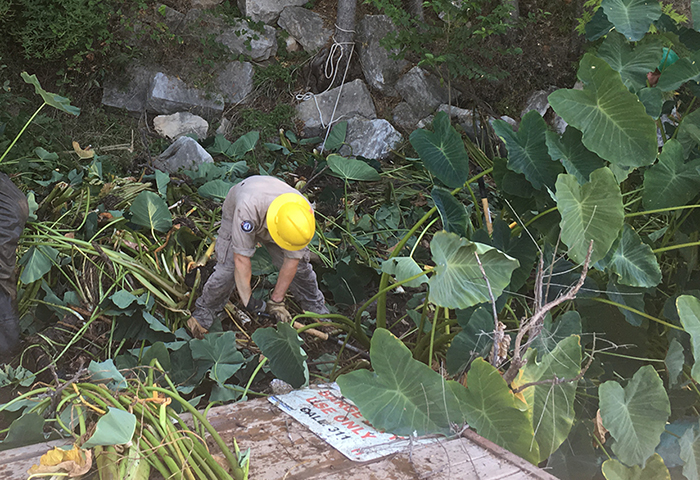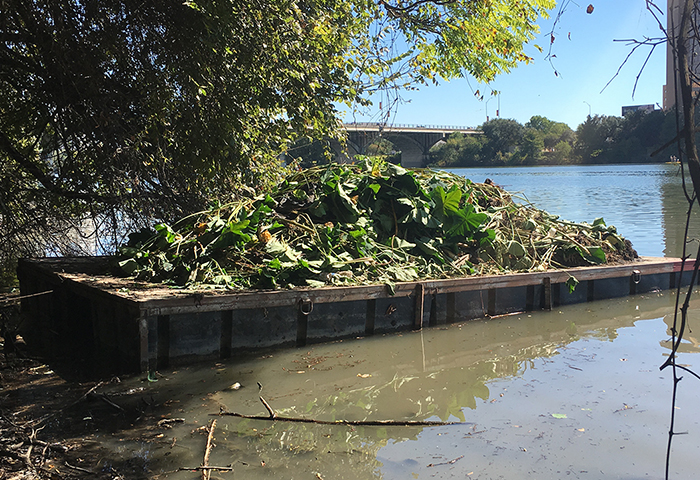Managing Elephant Ear on Lady Bird Lake
The shoreline of Lady Bird Lake is home to an amazing array of plants and birds, as well as plenty of turtles, and even a few nutrias. Unfortunately, one non-native nuisance plant has set up shop around the lake and seems to be crowding everything else out.
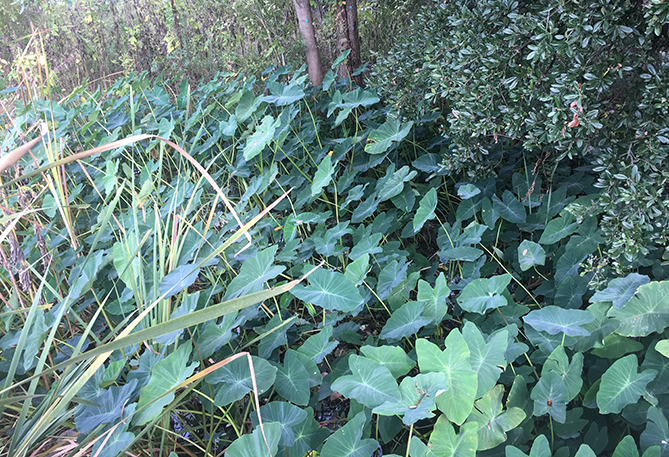
What it is
Elephant ear (also known as wild taro) is a native of the Asian tropics and has been in Central Texas since at least 1929. On Lady Bird Lake it likes to keep its feet wet right at the water’s edge. It can grow so densely that it prevents other plants from getting established. This reduces the diversity and resilience of the shoreline habitat, as well as the foraging areas available to large water birds such as herons and egrets. The shallow roots of small elephant ear plants are easily uprooted in floods, which allows the plants to move downstream and start new colonies. Approximately 1/4 of the shoreline below the South 1st St bridge is impacted by elephant ear. It is especially common on the north shore, where it gets plenty of sun throughout the year.
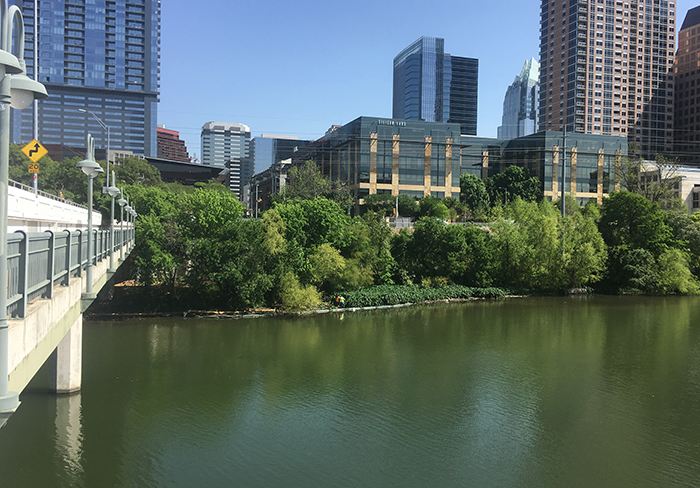
What we're doing about it
The City doesn’t plan on removing or killing every single elephant ear on the lake in order to improve the shoreline habitat. We want to reduce the populations enough so that they no longer dominate the lake. Eradication campaigns for invasive plants are often expensive, not always effective, and can have unintended consequences. Another aspect of our approach is that we don’t just take away, we also want to add back.
Our strategy is to manually remove the large, easily accessible patches of elephant ear and directly replace them with native plants. Narrow bands of plants and isolated patches that are in difficult to reach locations will be treated with an EPA-approved herbicide by a licensed applicator under the supervision of Watershed Protection Department staff. Removal and treatment areas will be monitored annually to evaluate whether further control is needed.
The following pictures show a Texas Conservation Corps crew at work on an elephant ear patch. This particular project was co-sponsored by The Trail Foundation.
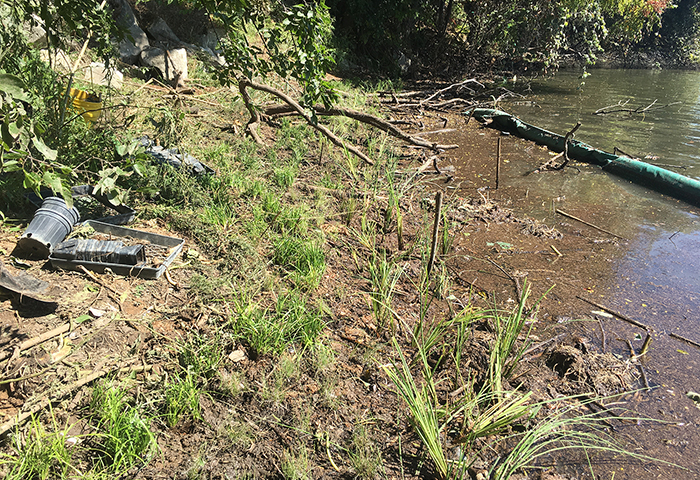
Native plants (switchgrass, eastern gamagrass, tall aster, goldenrod, Maximillian sunflower, horsetail, spikerush, Emory sedge and whitetop sedge) installed on the bank previously invaded by elephant ear.
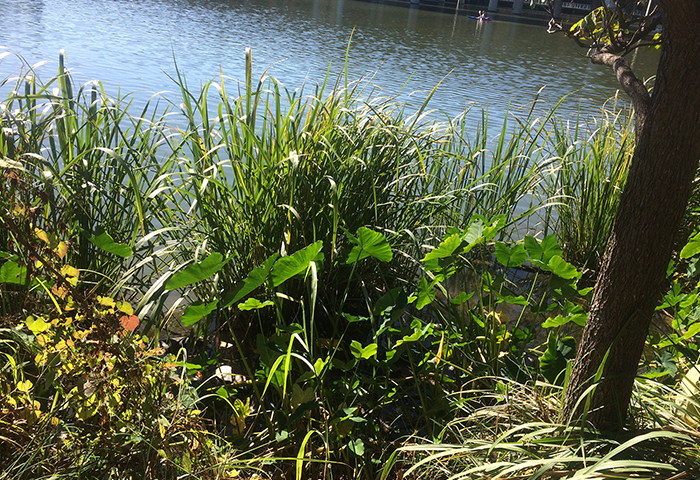
Recently, we have been noticing the native giant cutgrass popping up in many of our waterbodies. It appears to be a great competitor in shoreline areas and is a good tool in our efforts to increase the diversity and density of native plants in Lady Bird Lake.
How can you help control the spread of elephant ear?
- Use alternative plants-search the grow green plant guide
- Pickerel weed (Pontederia), arrowhead (Sagittaria) and powdery thalia (Thalia) are natives for water gardens
Other ways to help
- Do you see elephant ear in your local creek? Volunteer through Keep Austin Beautiful’s Adopt-a-Creek program or the AustinParks Foundation. City staff consults with creek and park adopters on best management practices for restoring creeks and managing invasive plants.
- The Trail Foundation hosts volunteer events throughout the year, including invasive plant management, wildflower seeding and tree seedling planting.
- Sign up to be notified about volunteer events co-organized by the Watershed Protection Department.

Here is a flyer describing the first phase of our elephant ear management project, which you can see being enjoyed by the great blue heron in the photo above. If you would like more information about how the City manages invasive plants visit www.austintexas.gov/invasive.

